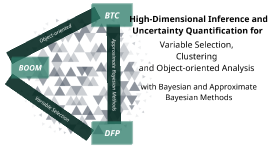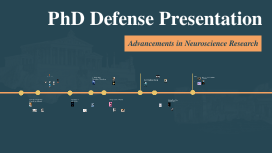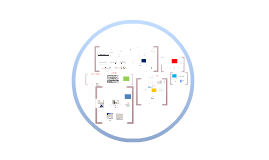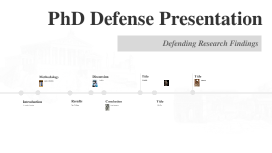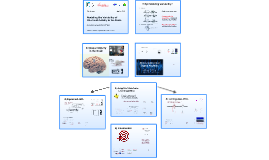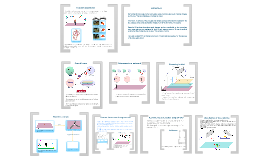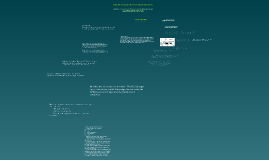PhD Defense
Transcript: Hitziger et al. Electro-metabolic coupling investigated with jitter invariant dictionary learning, HBM 2014. Results SNR [dB] presented by Sebastian Hitziger Bruno Torrésani Alain Rakotomamonjy template vs. random Coefficient updates = sparse coding Matching pursuit (MP) Epoching (often manually): problematic if Response onsets are unknown Responses overlap Averaging: problematic if Response latencies vary Response shape changes alternate Hitziger et al. Jitter-adaptive dictionary learning - application to multi-trial neuroelectric signals, ICLR 2013. Collaborators Compared techniques Contiguous AWL from http://jonlieffmd.com Invited guest Main contributions Single long signal Multiple occurrences (overlaps) Variable latencies and durations Implementation: MP (detection) MC-Spike/AD-Spike Lasso problem maximal spiking potential Statistical independence of components Combine previous models Evaluation Stepwise activation using LARS Every step: ensure uniqueness (and non-negativity) AD-Spike/MC-Spike benefit from relearning bad template Difficult to know a priori Hierarchical approach Task-dependent stopping criterion Large noise levels (background activity) No ground truth -> Adequate modeling -> Statistical learning from data Epoching + averaging too simplistic Signal variability (amplitudes, latencies, wave shapes) Complex data (multi-channel, multi-trial, multi-modal) CBF activity around 1 Hz (respiration) Local spiking rates (LSR) match CBF activity Spikes synchronize, phase-locked to CBF rhythm Examiners Short epochs/trials Uniqueness constraint Jitter compensation Implementation: LARS General model Generic algorithm Coefficient updates High spiking activity = high CBF level MC-Spike Detection step Reviewers time to previous spike [s] Use matching pursuit Ensure minimal distance constraint Sandrine Saillet Alexandre Gramfort Christian G. Bénar Bruno Torrésani Tallon-Baudry and Bertrand (1999) Each method addresses only one type of variability Laure Blanc-Féraud Christian G. Bénar Coefficients provide clustering Spike-to-spike distances correlate with spike energies Number of waveforms No epoching Multiple responses Sparsity of components 6) Conclusion Processing full LFP recording Dynamic time warping Speech processing (Itakura, 1975; Sakoe and Chiba, 1971, 1978) Event-related potentials (Picton et al., 1988) Latency compensation Multi-component models Time-frequency representations frequency [Hz] Summation of electromagnetic fields Alternate minimization Woody (1967) Weighted average over isolated spikes Normalization + alignment of peaks Advisors No individual CBF response visible Non-linear summation of responses Overlapping effects: epoching problematic Multi-class spike learning (no dilations) Hierarchical structure, start with alternate Maximizes variance Orthogonality between components Shortcomings No explicit modeling of temporal variability Create dictionary Dictionary learning (DL): http://biomedicalengineering.yolasite.com/neurons.php Hitziger et al. Adaptive waveform learning - application to single- and multi-modal neurological data, in preparation. Adaptive waveform learning (AWL) The general model Jung et al. (2000) 3) Adaptive Waveform Learning (AWL) Using noisy spike template Rescaling of time axis Representations in Fourier or wavelet bases Meaningful representations: time-frequency Complex values: separate phase and amplitude Finite set : discretization of "variability space" Sum over p: multiple occurrences per waveform PhD Defense April 14, 2015 Fast Spiking Rates Coefficients Waveform updates 1) Neural Activity in the Brain 4) Epoched AWL Spikes well isolated Clear CBF response after each spike Modeling the Variability of Electrical Activity in the Brain LFP-CBF recording Within ANR project Multimodel Recording in 6 anesthetized rats with bicuculline injection (epilepsy model) Goal: develop/evaluate models explaining parameter couplings Realigned average for every waveform Normalization + centering Discussion E-AWL specialization Insightful representations Clear artifact separation Comparison to PCA, ICA, template matching Deformations of signal components Coefficient updates Convex problem Solve sequentially for each : generalized averaging Normalization + centering Essentially averaging Choice of right basis Multi-channel extension (preliminary results Papageorgakis, 2014) Different specializations/applications (MEG, detect sleep spindles, ...) More general deformations (e.g., dynamic time warping) Time frequency version Hemodynamic coupling more studies needed Interneuronal communication S. Hitziger, M. Clerc, S. Saillet, A. Gramfort, C. Bénar, T. Papadopoulo. Electro-metabolic coupling investigated with jitter invariant dictionary learning, International Human Brain Mapping Conference (HBM), 2014. S. Hitziger, M. Clerc, S. Saillet, A. Gramfort, C. Bénar, T. Papadopoulo. Jitter-adaptive dictionary learning - application to multi-trial neuroelectric signals, International







